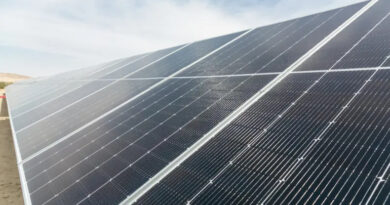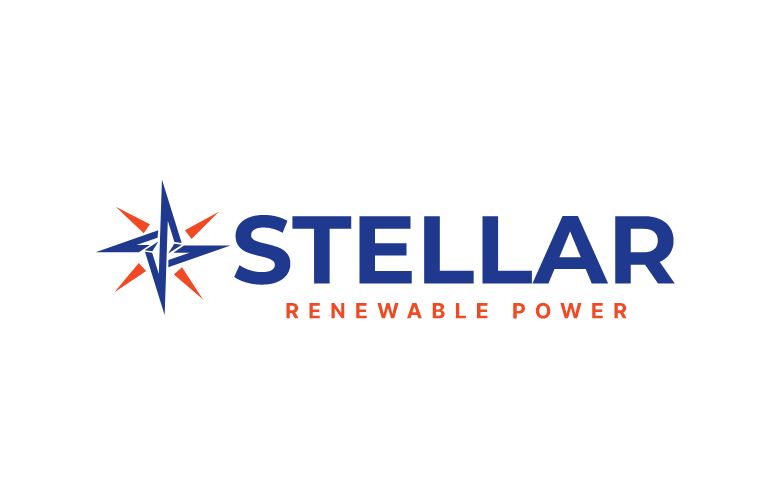DOE to help 11 remote and island communities in the U.S. transition to resilient, renewable energy
 The U.S. Department of Energy (DOE) announced it will work with 11 remote and island communities around the United States and provide federal assistance to bolster their energy infrastructure, reduce the risk of outages and improve their future energy and economic outlook. Due to their geographic isolation, remote coastal and island communities often face high energy costs and vulnerable energy infrastructure due to their increased risk of natural disasters and climate change. Watch this video to learn more about the program.
The U.S. Department of Energy (DOE) announced it will work with 11 remote and island communities around the United States and provide federal assistance to bolster their energy infrastructure, reduce the risk of outages and improve their future energy and economic outlook. Due to their geographic isolation, remote coastal and island communities often face high energy costs and vulnerable energy infrastructure due to their increased risk of natural disasters and climate change. Watch this video to learn more about the program.
“Residents of remote and island communities face energy disruptions, natural disasters, and climate change impacts and pay some of the nation’s highest energy costs,” said Secretary of Energy Jennifer M. Granholm. “These 11 communities — working hand-in-hand with DOE’s network of experts — will implement resilient and secure clean energy solutions. It’s a win-win — environmentally impacted communities will benefit from cheaper, more reliable power in their homes and businesses while our country makes progress toward the Biden Administration’s goal of 100% clean electricity by 2035.”
DOE’s Energy Transitions Initiative Partnership Project (ETIPP) will leverage the expertise of DOE’s experts and National Labs to advance local clean energy solutions and improve resilience for these 11 communities which, like other remote and island areas, often lack the financial resources and the access to experts to plan a clean energy transition. ETIPP employs a community-led and inclusive approach by identifying the energy challenges of each community and providing strategic assistance to help them determine and direct their energy transition.
Previous DOE initiatives helped New Orleans rebuild from Hurricane Katrina with funding for advanced microgrids to power parts of the city and trained Hawaii utilities officials on building more capacity for renewable energy sources.
The 11 selected communities are:
- Alaska Longline Fisherman’s Association (ALFA), Sitka, Alaska – ALFA’s fishing fleet is reliant on diesel fuel imports, the cost of which makes up most of the fishers’ earned income. With ETIPP, they will investigate the possibility of developing a hybrid fuel or electrified fishing fleet to reduce diesel reliance and increase the earning potential of their members.
- Dillingham, Alaska – Barge shipments containing the fossil fuels needed to power Dillingham’s islanded grid are a significant expense to the community. Through ETIPP, Dillingham and neighboring communities will explore the impact and benefits of the Nuyakuk River Hydroelectric Project.
- Eastport, Maine – To increase their energy resilience, reduce carbon emissions, and leverage their huge tidal resource potential, Eastport will explore the infrastructure and siting needs of a microgrid which integrates with the existing regional grid.
- Honolulu, Hawaii – To harden their electrical infrastructure from the threat of severe weather, Honolulu will look to develop a hybrid microgrid opportunity map that identifies the best opportunities for this technology to support resilience.
- Islesboro, Maine – Due to a vulnerable electric infrastructure, Islesboro relies on the mainland for their electricity, oil, gas, internet, and food. Islesboro is seeking to employ energy efficiency measures for their municipal and residential buildings, as well as researching renewable resource potential and storage options to be more self-sufficient.
- Kauai, Hawaii – Through ETIPP, Kauai will explore alternative and autonomous mobility options for its residents and tourists to move away from fossil-fuel powered single occupancy vehicles and toward a modern, clean transportation system.
- Nags Head, North Carolina – Nags Head is extremely vulnerable to severe weather events and long-term, rising trends in global sea level. To build up their resilience and prevent future disasters, Nags Head will explore various renewable energy and energy efficiency deployments and work toward securing 48 to 72 hours of backup generation for vital facilities used by first responders.
- Ocracoke Island, North Carolina – Ocracoke is planning for an electrified future and is exploring electrifying its ferry fleet, which residents are dependent on for transportation to the mainland. ETIPP will analyze the additional grid infrastructure needs that come with an all-electric ferry fleet, and how Ocracoke can best prepare for this future.
- Ouzinkie, Alaska – Ouzinkie currently relies on diesel generators and an aging hydroelectric system to power their community but is looking to understand how they can optimize their use of renewables and storage.
- Sitka, Alaska – To build up their renewable energy generation to support a growing community with changing needs, Sitka would like to assess the available renewable resources in and around their community while planning for a more modern grid control system.
- Wainwright, Alaska – Located in the Arctic Circle, Wainwright is a fully diesel-fired, islanded power grid looking to employ energy efficiency measures and renewable power where possible to decrease its reliance on diesel and increase its community resilience.
These projects are funded by Office of Energy Efficiency and Renewable Energy’s Energy Transition Initiative, Solar Energy Technologies Office, Water Power Technologies Office and are supported by the cross-cutting expertise of DOE’s Office of Electricity. Five regional stakeholder engagement partners will help communities identify and prioritize their energy resilience needs and connect them to experts from DOE’s National Renewable Energy Laboratory, Pacific Northwest National Laboratory, Sandia National Laboratories and Lawrence Berkeley National Laboratory.
In Fall 2021, new communities will be able to apply to be in the second group receiving technical assistance.
News item from the U.S. Department of Energy
<!–
–>
Original Source: https://www.solarpowerworldonline.com/2021/04/doe-to-assist-11-remote-communities-in-transition-to-clean-energy/













